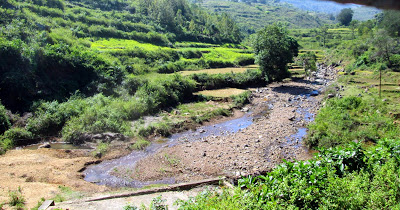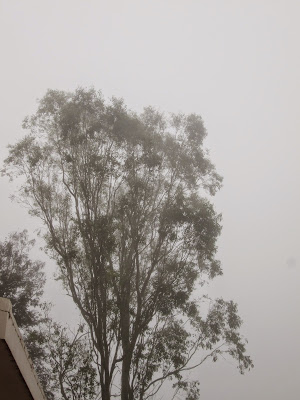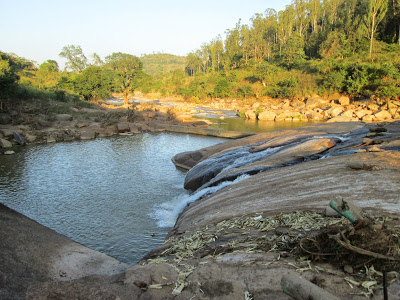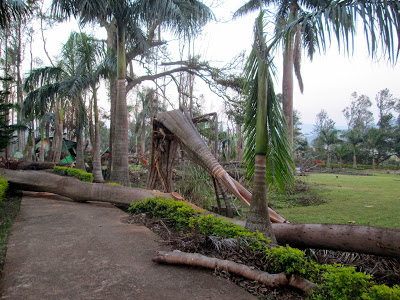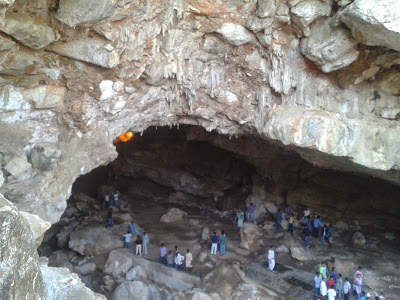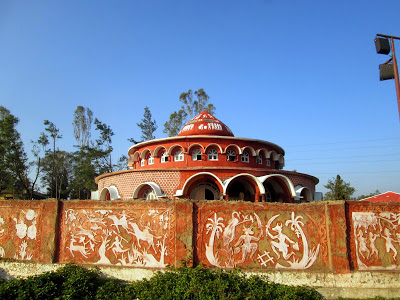
Travel: Araku Valley, Andhra Pradesh
The notional vacation
In Hudhud`s wake
It’s been more than six months since cyclone Hudhud tore through these parts, but the traces of devastation still haven’t been completely wiped out — at least not in Vizag and its surroundings.
Trees stand curiously aslant, like drunk sentinels, but with new green shoots emerging tentatively. In the town, many structures are getting a makeover. The parts that are yet to be rebuilt look like their facades have been bombed out; but people still live, eat, sleep and hang the washing from exposed iron rods.
The showrooms are all spic and span, though, and you’d never guess they had had their glass panes shattered, and that Hudhud had actually picked up even cars and flung them some distance away.
But the people haven’t forgotten. They still talk of windowpanes shattered to shards, doors pulled free of their hinges, dirt and debris deposited by the cyclone on sidewalks.
On the beach road, slabs of concrete were picked up and thrown aside by the cyclone. Six months on, Vizag is clearly a city still in recovery mode.
We are only too happy to escape to Araku Valley, approximately 112 kms from Vizag and close to the Odisha state border. We travel up by train, and for all the pretty waterfalls, the many tunnels, bamboo copses, shallow valleys and green meadows with the range of hills outlined in the distance in deep blue, we see swathes of devastated forests, great trees uprooted and a tree line drastically altered in places.
And we speculate what manner of beast Hudhud must have been, to wreak such damage.
Because we are in one of Andhra Pradesh’s little-known hill stations, supposedly one of the least polluted and less commercialised tourist destinations, and at 2,989 ft above sea level, we are entitled to some mist, aren’t we?
That mist clears soon, though, and the day, as all the days to follow, turns into a scorcher. However, the place does have a charm of its own.
A rolling range of hills — Galikonda, Raktakonda, Sunkarimetta and Chitamogondi — surrounds us on all sides, Galikonda rising to a lofty height of 5,000 ft.
There is Chaparai which is a scenic spot popular with film units. Flowing water, tribal women selling corn on the cob and peanuts, tribal men offering tourists a go at archery — it’s scenic enough as spots go, but I’ve got to say it: there does hang the unpleasant stench of urine.
The Galikonda viewpoint is packed with local tourists and we quickly back away.
There is a patina of red dust all around and the place looks like a scene out of Godhuli.
However, the Borra caves, a 40-km ride away, is the jewel in the valley’s crown. The caves, discovered in 1807 by British geologist William King, are deep, dark and mysterious, with narrow sulphur streams, and stalagmites and stalactites, more sturdy rock formations than sharp arrowheads.
They are also filled with noisy people all blowing shrill vuvuzela-like horns and whistles, apart from hooting, shrieking, screaming and generally behaving in a terrible fashion. There was, of course, no one to shush them. I kept thinking of how terrified the bats in the cave must be.
The Tribal Museum is a collection of brick buildings selling local bamboo-ware, jungle honey and preserves, and suchlike. The museum itself is your standard government representation of tribal lives, which I suspect even a tribal would be hard put to recognise, let alone acknowledge.
There are hilarious captions like ‘Marriage Culture’, ‘Day starts with Fetching’ (water) and ‘Sharing of Happiness.’
Araku is famous for its coffee plantations; one of India’s first tribal growers’ organic coffee brand was launched here in 2007 and visits to the coffee shop near our hotel soon became mandatory.
We’d sit on moulded iron chairs, drinking excellent Arabica and Peaberry and listening to an atrociously accented voice giving us the history of coffee over the tannoy.
Every time we got up to go, the voice would extol yet another virtue; “Coffee cures ‘aljeemer’,” it would say, and at once, we would sit down for another cuppa of the anti-Alzheimer’s brew.
The last words belong to my companion, M. Returning to our hotel, we pass a signboard touting a ‘national vacation’ in these parts. This trip was more like a notional vacation, says M.
